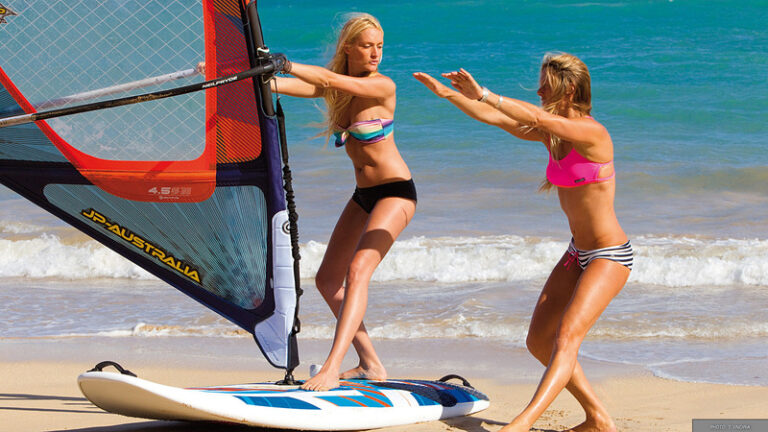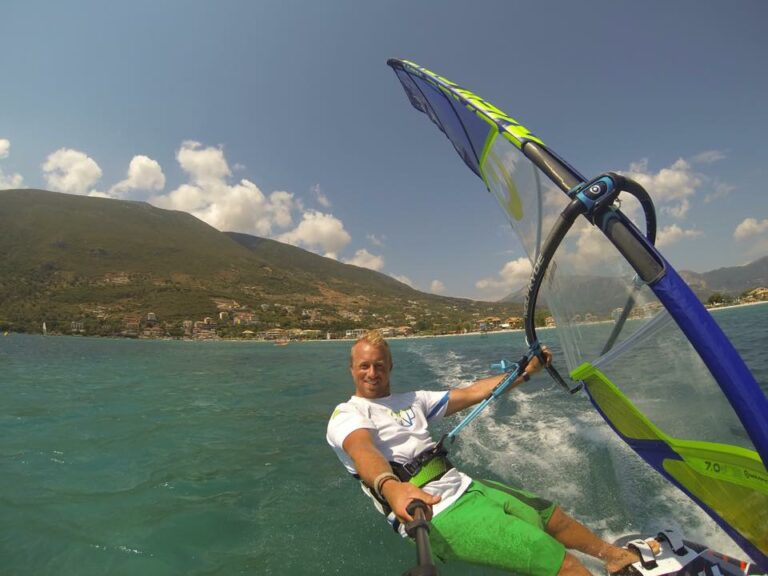If you want to hit top speeds it’s not just about getting the best equipment, you need to make sure your basic technique and stance it right too.
Here, Andy ‘Bubble’ Chambers joins Boards to refine your freeride speed skills and more to get you ready for the latest speed boards.
Check out the previous features in the technique series here:
13 Steps To The Perfect Duck Gybe
Learn To Waterstart in 12 Steps
Speed
Different points of sail require different body positions…
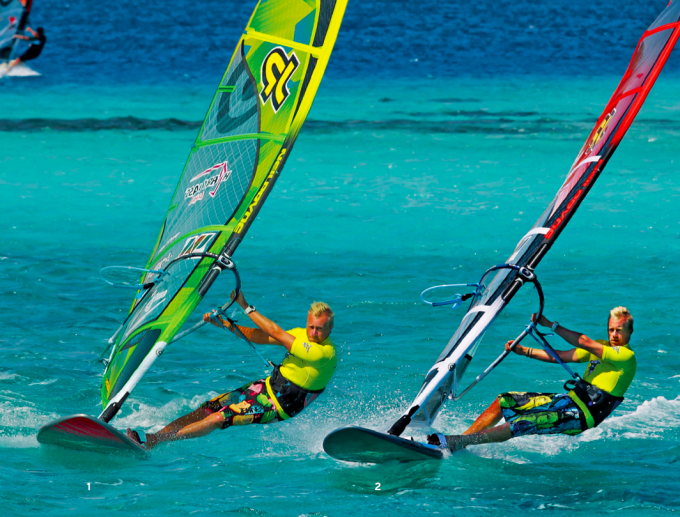
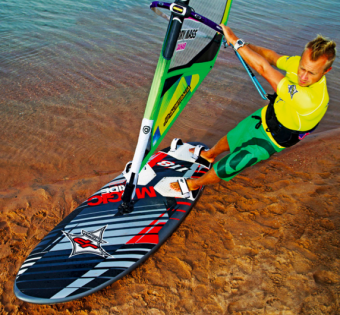 If you‘re going upwind (1 and down left) the body position is different compared to going downwind. Going upwind requires bringing the upper body more forward, as if you‘re trying to look around the front of the mast. Moving your hands forward will help. Bubble keeps his front leg slightly bent and his back leg straight to get himself into this position.
If you‘re going upwind (1 and down left) the body position is different compared to going downwind. Going upwind requires bringing the upper body more forward, as if you‘re trying to look around the front of the mast. Moving your hands forward will help. Bubble keeps his front leg slightly bent and his back leg straight to get himself into this position.
For going downwind it’s the opposite: The upper body is oriented more backwards, the front leg is almost stretched, the back leg slightly bent. Move your hands further down the boom.
In strong winds I get too much pressure on my rear leg…
The reason might be that the fin you‘re using is too big. Try to use a fin about three to five centimetres smaller in high winds. On the other hand a slightly bigger fin will improve the ability to get planing and going upwind in light winds.
TECHNIQUE AND TUNING
Where should I put the mast foot?
In general: If in doubt, put it in the middle, this is where the designers would recommend it for most conditions. Nevertheless, it can be an advantage in light wind conditions to put the mast foot a bit further back, this will cause the board to become more lively, the nose rides a bit higher, making the board faster. Many windsurfers still choose a position further forward. This will only make sense if you‘re riding in high-wind conditions because it keeps the nose down and reduces the boards tendency to do “wheelies“. In light wind conditions this setup may cause the nose to hit the chop more frequently, which reduces speed and riding comfort, it will also make the board feel stuck to the water and unresponsive. Just make sure you only move it 1-2 centimetres, not all the way forward or all the way back.
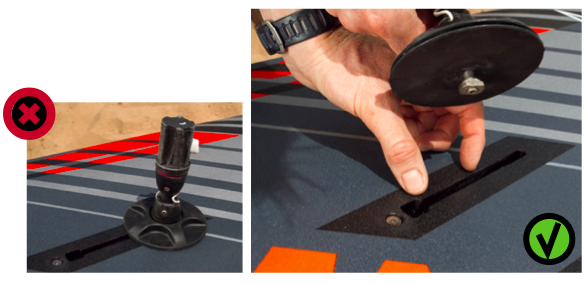 How to find the right sail adjustments?
How to find the right sail adjustments?
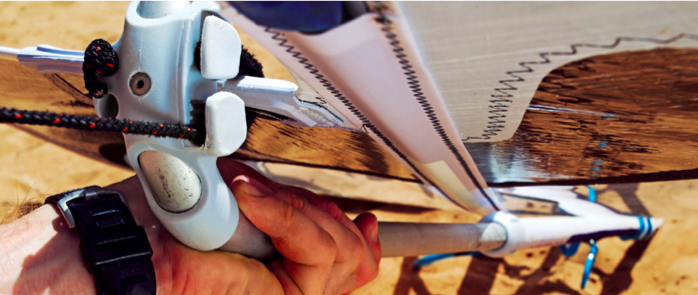
 Different sail brands use different adjustments. But what many sails, no matter which brand, have in common is that they are rigged completely wrong all around the world!
Different sail brands use different adjustments. But what many sails, no matter which brand, have in common is that they are rigged completely wrong all around the world!
A lot of windsurfers still think that you have to pull as much outhaul as downhaul. One thing is for sure – all sails need more tension at the downhaul than at the outhaul.
Adjust the downhaul in a way that the leech starts to go loose between the upper two battens. This is called “loose leech“ (pic down left). Put moderate outhaul tension to allow the sail to “breathe“ and have a nice profile while loaded – If you pull at the outhaul like Schwarzenegger you will kill the sails profile and performance.

 Strap position – when does the outer position make sense?
Strap position – when does the outer position make sense?
People who have just started to windsurf and are still struggling to get planing should use the furthest inside position as possible. As soon as you do not have problems anymore stepping in and out of the straps, you can try to improve your boards‘ performance by moving the straps a bit further outside, which requires the use of two back straps. This will make it more difficult to get in and out of the straps, but on the other hand standing further outside on the rail improves control in high winds – and more control means more speed when you‘re really powered up!
Photos/text: Stephan Gölnitz/Manuel Vogel/Andy Chambers.
The whole freeride series has been put together i conjunction with Surf Magazin and their How To Freeride Special. Check out further information here.

